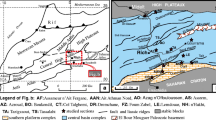Abstract
Seven years of investigations on the so-called “Grand Récif” at Tuléar (south-western coast of Madagascar) lead the authors to put forward several hypotheses about the trophic structure of this biocoenotic complex. The Tuléar coral reef seems to be an almost autarchic system, with a very important benthic primary production by xanthelles, epiphytic diatoms and blue-green algae, and perhaps “green filaments” (Ostreobium); the energetic contribution from planktonic production seems to be rather small. A very important content of organic aggregates in the reef waters probably results from the high production of mucus by most of the corals and similar organisms (mainly zoantharians). This “paraprimary” production is trapped in the coarse sand banks and in the “mesh” of the reef (see below). The fauna of small invertebrates, belonging mainly to the secondary link of the food chain, is very rich in the small holes and crevices existing in the reef mass, but scarce in the biocoenoses on the reef surface. The dead parts of the reef have a “mesh” structure which confines most of this fauna representing the secondary level of the food pyramid. The production of fish in the reef coral environment is poor, probably because of the blocking of most of this secondary production in the reef's “mesh” structure; in this alveolary system a gigantic wasting of animal production takes place, which makes the trophic structure of the coral reef complex and quite unbalanced.
Résumé
-
1.
Sept années de recherches sur le «Grand Récif» de Tuléar (côte sud-ouest de Madagascar) conduisent les auteurs à présenter quelques résultats préliminaires nouveaux et à suggérer quelques hypothèses de travail concernant notamment la structure trophique du complexe biocoenotique récifal.
-
2.
Le «Grand Récif” de Tuléar paraît constituer un système presque autarcique doté d'une production primare benthique importante représentée par: les zooxanthelles, qui paraissent être éliminées normalement de façon plus ou moins rythmique par les invertébrés hôtes; les Diatomées et Cyanophycées épiphytes; peut-être les «filaments verts» (Ostreobium) existant dans le squelette des Coraux. L'apport énergétique d'origine planctonique paraît faible.
-
3.
La plupart des Cnidaires sessiles, et particulièrement les Zoanthaires, produisent des quantités importantes de mucus; celui-ci intervient sans doute dans la genèse d'agrégats particulaires, pourvus d'une couverture de microorganismes épiphytes; cette production «paraprimaire» est récupérée par le complexe récifal, d'une part au niveau des bancs de sables grossiers, et, d'autre part, par le réseau alvéolaire évoqué ci-dessous.
-
4.
La lacune la plus grave de toutes les études antérieures concernant le complexe biocoenotique récifal est de n'avoir considéré que ce qui existait sur le récif construit et d'avoir négligé la riche faune de petits invertébrés, appartenant essentiellement à l'échelon secondaire de la pyramide alimentaire, faune qui est enfermée dans un système de cavités («maille récifale”) d'où elle ne sort que sous l'effet de la surpopulation.
-
5.
La production relativement faible des édifices récifaux à l'échelon des poissons carnivores paraît résulter essentiellement du blocage de cette production secondaire au sein de la «maille récifale»; il y a là un gigantesque gaspillage de production animale qui fait du complexe récifal un système déséquilibré sur le plant trophique.
Similar content being viewed by others
Littérature citée
Bakus, G. J.: The feeding habits of fishes and primary production at Eniwetok, Marshall Islands. Micronesica J. College of Guam 3, 135–149 (1967).
—: Defensive mechanisms and ecology of some tropical holothurians. Mar. Biol. 2, 23–32 (1968).
Gerlach, S. A.: The tropical reef as a biotope. Atoll Res. Bull. USA 80, 1–6 (1961).
Goreau, T. F.: Mass expulsion of zooxanthellae from Jamaica reef communities after hurricane Flora. Science, N.Y. 145, (3630), 383–386 (1964).
Halldal, P.: Photosynthetic capacities and photosynthetic action spectra of endozoic algae of the massive coral Favia. Biol. Bull. mar. biol. Lab., Woods Hole 134, 411–424 (1968)
Jeffrey, S. W.: Photosynthetic pigments of the phytoplankton of some coral reef waters. Limnol. Oceanogr. 13, 350–355 (1968).
Laubier, L.: Le coralligène des Albères. Monographie biocénotique. Annls Inst. océanogr., Monaco (N.S.) 43, 137–316 (1966).
Marshall, N.: Observations on organic aggregates in the vicinity of coral reefs. Mar. Biol. 2, 50–53 (1968).
Odum, H. T. and E. P. Odum: Trophic structure of windward coral reef community on Eniwetok atoll. Ecol. Monogr. 25, 291–320 (1955).
Peres, J. M. et J. Picard: Note préliminaire sur le benthos littoral de la région de Tuléar (Madagascar). Recl Trav. Stn mar. Endoume (=Trav. Stn mar. Tuléar) (H.s.) (Suppl. 1), 145–151 (1963).
Picard, J.: Essai de classement des grands types de peuplements marins benthiques tropicaux, d'après les observations effectuées dans les parages de Tuléar (S.W. de Madagascar). Recl Trav. Stn mar. Endoume (=Trav. Stn mar. Tuléar) (H.s.)(Suppl.6) 3–24 (1967).
Thomassin, B.: Peuplements de deux biotopes de sables coralliens sur le Grand Récif de Tuléar. Recl Trav. Stn mar. Endoume (=Trav. Stn mar. Tuléar) (N.s.) (Suppl. 9) (1969) (sous presse).
Webb, J. E. and J. Theodor: Irrigation of submerged marine sands through wave action. Nature, Lond. 220 (5168), 682–683 (1968).
Yonge, C. M., S. M. Marshall, A. G. Nicholls, C. B. Nicholls, A. P. Orr and G. W. Otter: Great barrier reef expedition 1928–1929 (Scient. Rep. Gt Barrier Reef Exped.). 1, 1–392 (1930).
Author information
Authors and Affiliations
Additional information
Communicated by J. M. Peres, Marseille
Rights and permissions
About this article
Cite this article
Peres, J.M., Picard, J. Réflexions sur la structure trophique des édifices récifaux. Marine Biology 3, 227–232 (1969). https://doi.org/10.1007/BF00360955
Accepted:
Issue Date:
DOI: https://doi.org/10.1007/BF00360955




